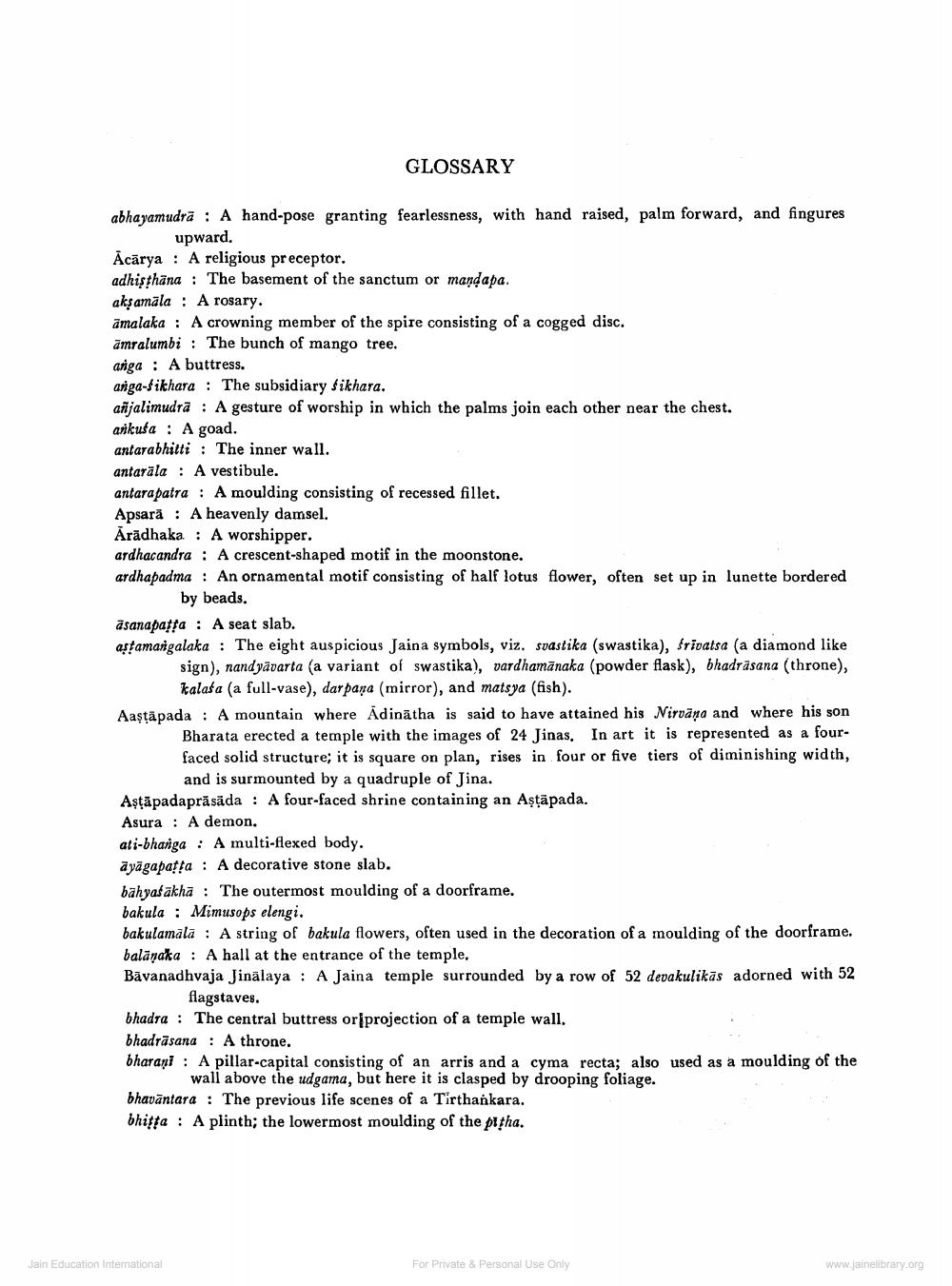________________
GLOSSARY
abhayamudra : A hand-pose granting fearlessness, with hand raised, palm forward, and fingures
upward. Ācārya : A religious preceptor. adhisthāna : The basement of the sanctum or mandapa. aksamala : A rosary. amalaka : A crowning member of the spire consisting of a cogged disc. amralumbi : The bunch of mango tree. anga : A buttress. anga-Sikhara : The subsidiary Sikhara. añjalimudra : A gesture of worship in which the palms join each other near the chest. arkuša: A goad. antarabhitti : The inner wall. antarala : A vestibule. antarapatra : A moulding consisting of recessed fillet. Apsara : A heavenly damsel. Arādhaka : A worshipper. ardhacandra: A crescent-shaped motif in the moonstone. ardhapadma : An ornamental motif consisting of half lotus flower, often set up in lunette bordered
by beads. asanapatta : A seat slab. aştamangalaka : The eight auspicious Jaina symbols, viz. svastika (swastika), Srivatsa (a diamond like
sign), nandyāvarta (a variant of swastika), vardhamānaka (powder flask), bhadrâsana (throne),
kalaša (a full-vase), dar pana (mirror), and matsya (fish). Aastăpada : A mountain where Adinātha is said to have attained his Nirvana and where his son
Bharata erected a temple with the images of 24 Jinas. In art it is represented as a fourfaced solid structure; it is square on plan, rises in four or five tiers of diminishing width,
and is surmounted by a quadruple of Jina. Aştāpadaprāsāda : A four-faced shrine containing an Aştāpada. Asura : A demon. ati-bhanga : A multi-flexed body. ayagapatta : A decorative stone slab. bahyas ākha : The outermost moulding of a doorframe. bakula : Mimusops elengi. bakulamālā : A string of bakula flowers, often used in the decoration of a moulding of the doorframe. balānaka : A hall at the entrance of the temple. Bāvanadhvaja Jinälaya : A Jaina temple surrounded by a row of 52 devakulikās adorned with 52
flagstaves. bhadra : The central buttress or projection of a temple wall. bhadrâsana: A throne. bharani : A pillar-capital consisting of an arris and a cyma recta; also used as a moulding of the
wall above the udgama, but here it is clasped by drooping foliage. bhavāntara : The previous life scenes of a Tirthankara. bhitta : A plinth; the lowermost moulding of the pitha.
Jain Education International
For Private & Personal use only
www.jainelibrary.org




